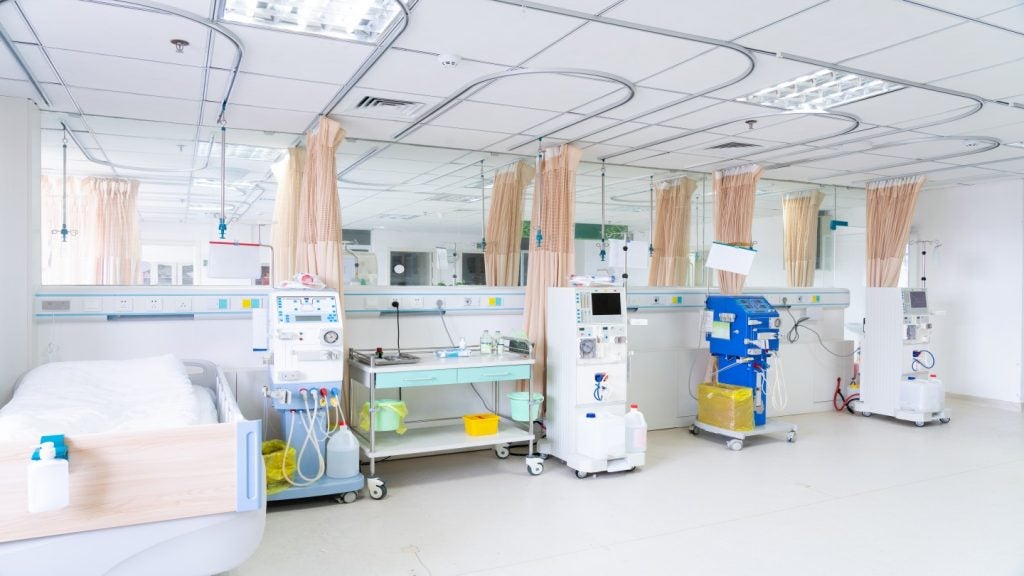
Torsades de pointes (TdP), which literally means “twisting of points”, is a distinctive form of polymorphic ventricular tachycardia (VT) characterised by a gradual change in the amplitude and twisting of the QRS complexes around the isoelectric line. While this abnormal heart rhythm usually terminates spontaneously, it can recur and can degenerate into ventricular fibrillation, which then causes sudden cardiac arrest.
A joint scientific statement released by the American Heart Association and the American College of Cardiology and endorsed by the International Society for Computerised Electrocardiology and the American Association of Critical-Care Nurses, “Prevention of torsade de pointes in hospital settings” (2010) has warned that cardiac arrest from medication-induced TdP is a rare, but a potentially catastrophic event in hospital settings and that healthcare professionals must be made aware of its significance, in order to protect the most vulnerable patients.
Once TdP is spotted on the cardiac monitor, it is already too late; seconds after the arrhythmia begins, the patient loses consciousness and dies suddenly unless immediate defibrillation takes place. The goal, therefore, is to recognise signs of impending TdP hours before it occurs so the drug that is potentially causing the problem can be stopped.
According to Dr Barbara Drew, professor at the University of California, San Francisco, and chairwoman of the statement writing committee, 98% of patients who develop TdP have a prolonged time interval on their ECG known as the QT interval. “But the problem with just looking at the QT interval is that many patients who receive QT-prolonging drugs develop a prolonged QT interval, but never develop the dangerous arrhythmia,” she explains.
Merely studying a patient’s QT interval is not enough; there are also other subtle ECG signs that must be taken into account.
“These take much more training to spot and include increased size and distortion of the shape of the t-wave, particularly in a beat following a pause, and an alternation of the t-wave with every other beat,” Drew notes. “Another sign would be the development of ventricular ectopic beats and couplets. If any of these signs occur in conjunction with a prolonged QT interval, it makes it more likely you will have a more specific predictor of who will develop TdP.”
How well do you really know your competitors?
Access the most comprehensive Company Profiles on the market, powered by GlobalData. Save hours of research. Gain competitive edge.

Thank you!
Your download email will arrive shortly
Not ready to buy yet? Download a free sample
We are confident about the unique quality of our Company Profiles. However, we want you to make the most beneficial decision for your business, so we offer a free sample that you can download by submitting the below form
By GlobalDataSpotting the signs
The current level of training at medical facilities means that many healthcare professionals are unable to spot these subtle signs. “When cardiac monitoring was initiated in hospitals in the 1960s, it was really meant for basic cardiac rhythm interpretation – to find out who had fast or slow heart rates that needed treatment or who was developing ventricular fibrillation or life-threatening arrhythmias,” says Drew, who is also a fellow of the American Academy of Nursing and the American Heart Association’s Council of Cardiovascular Nursing. “The assessment of the QT interval and other more subtle signs of impending TdP are something that most people who watch the monitor in hospitals are unaware of.”
There is no way of knowing how and why many people develop TdP as outpatients; many sudden deaths cannot be explained. “There are suspicions, particularly when they were recently started on antibiotics,” Drew remarks. “But there’s no proof as they weren’t on a cardiac monitor at the time of death.”
In a hospital setting, however, it has become clear that not one, but several factors usually lead to the development of the abnormal heart rhythm. “Multiple factors come together in one patient at one time and that’s the rare patient who develops this disaster,” Drew summarises. “For example, hospitalised patients are often given QT-prolonging drugs; they may get more than one at a time administered intravenously to achieve an immediately high concentration.”
There are many classes of drugs that can prolong the QT interval – from antibiotics to anti-psychotics, pain killers to cancer-treatment drugs and even medication used to treat heart-rhythm disorders, such as anti-arrhythmic drugs. But the FDA now requires that any new drug brought to market must pass a QT interval prolongation test, meaning that none of the above drugs are “highly likely” to cause TdP.
“If a drug was highly likely to cause TdP it would never get approved,” Drew remarks. “And the ones that are approved are needed for important reasons, such as cancer or heart disease treatment, so we live with the small risk of it causing this fatal heart rhythm disturbance.”
Hospitalised patients are also in poorer health than outpatients. Liver and kidney ailments can be particularly problematic because those two organs are responsible for detoxifying and eliminating drugs. “Moreover, we know that patients with a history of heart disease are more likely to develop TdP,” Drew continues. “We often give patients diuretics when they are in heart failure, which can lead to electrolyte abnormalities, such as low potassium, another risk factor.”
It has been observed that 70% of TdP cases occur in women, the significance of which has not been fully investigated, although Drew does have theories as to why this is the case. “Although males and females are born with the same QT interval, when they reach puberty boys’ QT intervals reduce, staying that way for the remainder of their life,” she notes. “We believe increased testosterone levels result in this protective effect. Also, women tend to outlive men and we know that advanced age is a risk factor; perhaps these older women are sicker.”
While none of these theories have been proven, there is growing evidence that genetic susceptibility can contribute to a patient’s risk of developing TdP. “In the future when people come into hospital, there will be sort of a fingerprinting method so that we will know which drugs are safe for which patient, but we’re not there yet,” Drew remarks.
Managing risk
In the meantime, a thorough risk-benefit analysis is crucial for every patient who is prescribed a QT prolonging drug. Methadone, for example, is used as an inexpensive painkiller for many patients suffering from cancer because it doesn’t have the side effects associated with morphine sulphate such as constipation and altered consciousness. But, as it is a QT-prolonging drug, guidelines have recently been set out to govern its use.
“In 2009, guidelines were published about starting patients on methadone as an outpatient,” Drew notes. “Patients must have an EKG and if they have a long QT interval at baseline, they will not be given methadone as painkiller. Even if they don’t have a long QT interval, they have to have follow-up EKGs once they start on it.”
The risk-benefit ratio in a hospital setting is even more important. “If patients have several risk factors – such as low potassium or kidney, heart or liver problems – and you want to start them on a QT prolonging drug, they should be moved to a unit with continuous ECG monitoring and immediate defibrillation facilities,” Drew emphasises.
But there simply aren’t enough monitored beds in hospitals to monitor everybody on a QT prolonging drug. In UCSF Medical Center, for example, there are 650 beds in total and 192 monitored beds situated in the emergency room, special diagnostic rooms, such as the cardiac catheterisation lab, surgery, post-anaesthesia recovery units, intensive care units and telemetry units. And according to Drew, the sickest patients must be on the monitor. “Those beds are scarce and if somebody is healthy in every other respect and doesn’t have any other risk factors, they will probably be fine,” she notes. “You can still order a daily EKG; you just won’t measure beat-to-beat.”
The American Heart Association published a scientific statement in 2004 entitled “Practice standards for ECG monitoring in hospital settings”, for which Drew, again, chaired the writing group. “This outlined who had the highest priority for ECG monitoring with patients divided into classes one, two and three,” she outlines. “That paper can be referred to; in fact, those are the only guidelines we have at the moment.
“It is a struggle in a way because we know that patients in monitored beds in hospitals get more surveillance. In the state of California, we have legislation that mandates the nurse-patient ratio and it is much higher in monitored units.”
Side effects
Healthcare professionals only have limited knowledge of the dangerous side effects of TdP, a culture Drew is committed to changing. She and a colleague have just been funded by the National Heart, Lung and Blood Institute to implement a major educational intervention, which will take the form of a multi-centre clinical trial, known as the PULSE study and focusing on the “Practical Use of the Latest Standards for Electrocardiography”.
The study, which continues until 2013, covers one hospital in Canada, one in Hong Kong and 16 in the US. “We have developed an ECG module based on the PULSE practice standards and we are emphasising nurses who connect a patient to a monitor in a hospital setting should have knowledge in three areas: arrhythmia monitoring, ischemia or ST segment monitoring and QT interval monitoring,” Drew explains. “We teach how to measure the QT interval, why it is important and the critical threshold.”
Her main priority is to ensure patients are protected. “We felt the need for this paper because the clinical people treating these patients were being cavalier about looking for this problem,” the professor of medicine emphasises. “But the hospital should be the one place where vulnerable patients are protected.
Changing the culture
Technological advancements will also contribute to a culture shift in hospital units. At the moment, the majority of hospitals monitor QT intervals in a computer-assisted manner; a nurse or monitor technician uses electronic callipers to pull up a rhythm on the display and make a measurement. But this is time-consuming and subjective.
“Each nurse or technician might have a different opinion about where the interval begins and ends, or use a different heart-rate correction formula,” Drew remarks. “It’s also extremely important that you don’t have multiple people on multiple shifts making the measurement.”
But in 2008, Philips Medical Systems developed a form of computer software that can continuously and automatically measure the QT interval – an advancement that may transform the industry. “A measurement is made automatically by the computer software in the monitor and it’s updated every five minutes and displayed on the ECG display,” Drew explains. “There are built-in alarms which sounds if there is a sudden increase beyond the critical threshold.”
Fierce competition
As more companies cotton on to the technology, there is little doubt competition will increase and more solutions will become available. For Drew, the best outcome would be that all cardiac monitoring manufacturers develop an automatic system so everybody on a cardiac monitor would have that standard measurement made. “You can always argue about how accurate the computer is,” she admits, “but at least the computer measures the same way every time.”
While TdP is only developed in rare circumstances, healthcare professionals should not relax their grip on procedures surrounding it; for Drew, this was the main reason for releasing her statement. Only if clinicians heed her advice and increase their awareness of monitoring techniques, will patients who are most at risk be protected.







